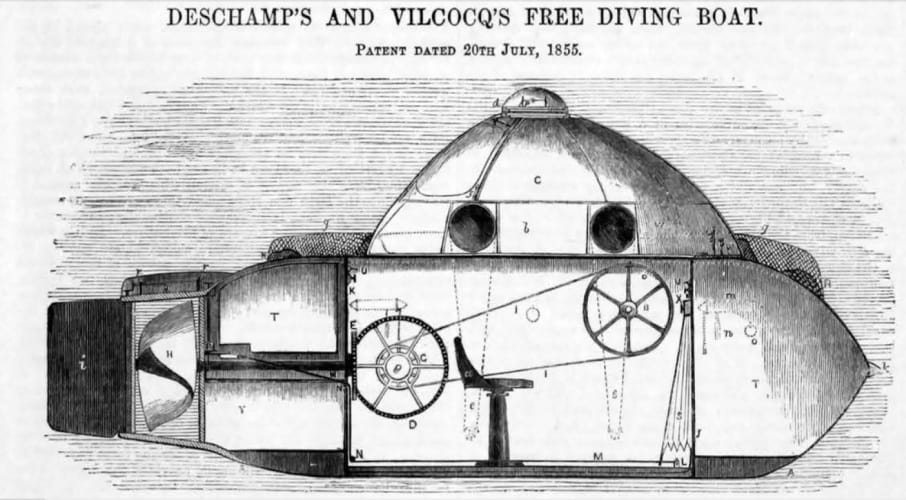In this article from 1856 – The Engineer’s first year of publication – the magazine wrote about the development of ‘Deschamps and Vilcocq’s free diving boat’ - a hand-powered submarine.

The article describes a vessel ‘which may be freely directed backwards and forward at the surface or at the bottom of the sea by the operator by means of a screw helix and a rudder, both set in motion by means of gear wheels arranged inside so as to be worked by the hand of the operator’. According to the article, the submarine operator would be able to breath freely and work underwater for several hours thanks to an on-board store of compressed air accessed by sucking on a pipe. Other frills included a glass floor for close analysis of the seabed and a built-in set of rubber gloves for the submariner to touch and palpate objects outside the submersible.
Employing the same principles of buoyancy seen in today’s underwater vehicles, the submarine could be made to rise and fall by filling and emptying two sets of hosing attached to the outside of the vessel with compressed air. Batteries contained within a watertight chamber powered on-board lights as well as a search lamp to ‘project light to a very great distance’.
According to The Engineer, the vessel had a host of applications from making ‘investigations and discoveries at the bottom of the sea’ to raising or destroying foundered vessels and ‘reconnoitring without any danger of being discovered’. But while it’s certainly an early example, this is not the first submarine. That honour, according to Aristotle, goes to Alexander the great, who developed a primitive underwater reconnaissance vehicle in 332 BC.




Red Bull makes hydrogen fuel cell play with AVL
Formula 1 is an anachronistic anomaly where its only cutting edge is in engine development. The rules prohibit any real innovation and there would be...